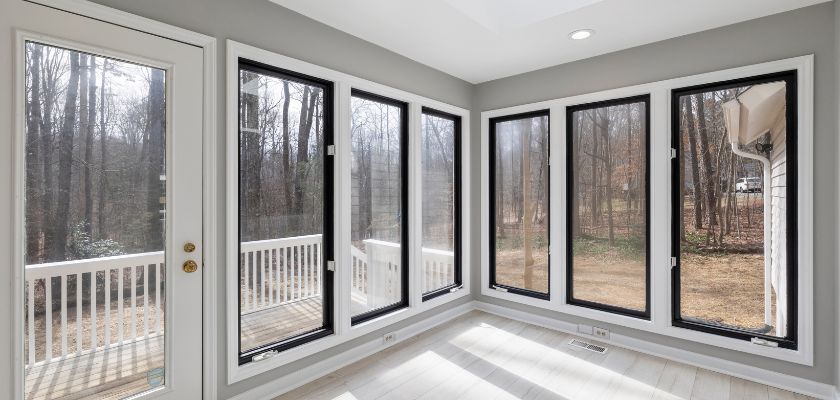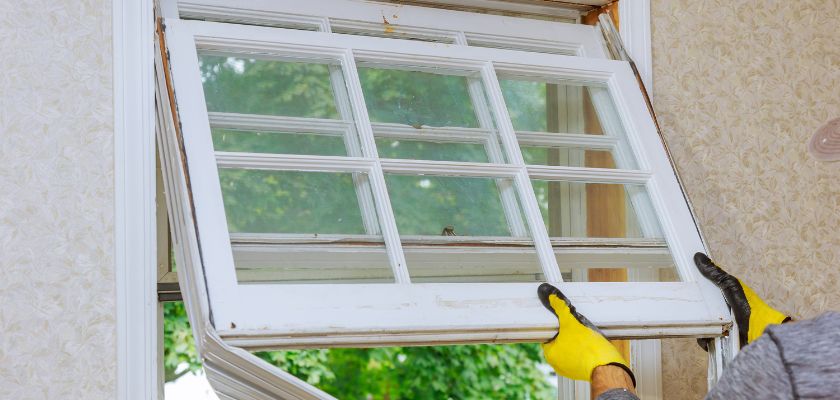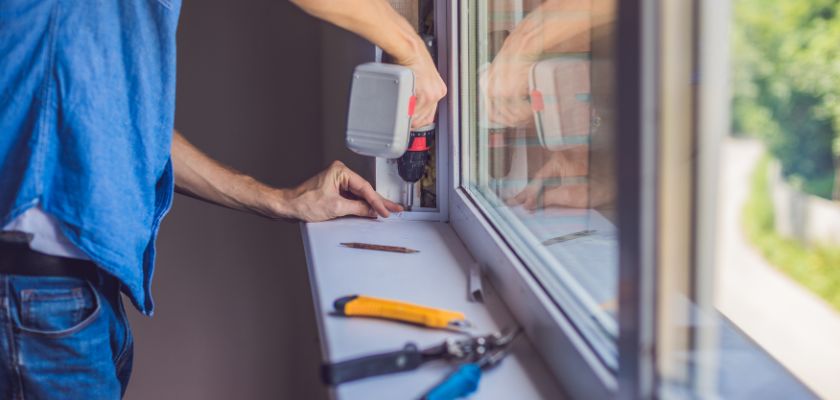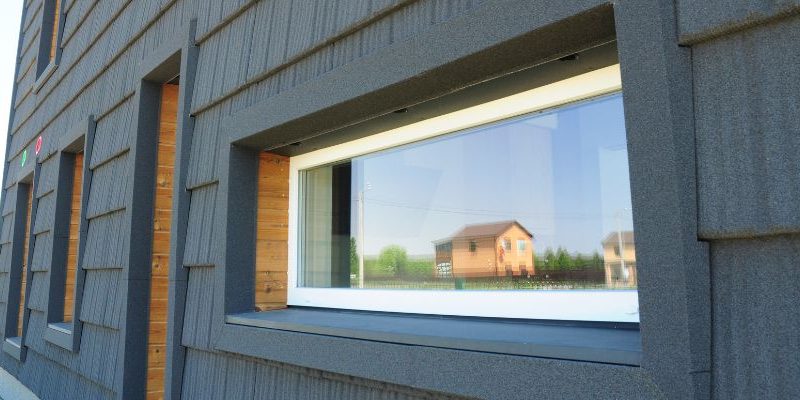The comfort, energy use, and general aesthetics of your home can all be greatly impacted by poor window maintenance. At Acclaim Restorations, we are experts in offering McKinney, Texas residents excellent windows and door services that improve the curb appeal and energy efficiency of their homes. Like selecting a flat roof repair, another service where efficiency and material quality are crucial, this guide will lead you through the main factors and choices for selecting the finest energy-efficient windows that meet your demands.
Understanding Energy Efficiency Ratings

U-Factor
The U-factor measures the window’s ability to insulate. Windows with a lower U-factor have better insulating properties, which is essential for maintaining indoor temperature extremes in both hot and cold climates. Look for windows with a U-factor of 0.30 or less for optimal insulation.
Solar Heat Gain Coefficient (SHGC)
SHGC indicates how much heat from the sun your windows can block. This is particularly important in hot climates where excessive heat gain can lead to higher air conditioning costs. Energy-efficient windows should have a low SHGC rating to reduce solar heat absorption.
Visible Transmittance (VT)
VT measures how much light passes through a window. High VT values mean more natural light, which can help reduce the need for artificial lighting during the day. This is a crucial factor for energy savings, similar to considerations made during flat roof replacement projects for light utilization.
Selecting the Right Window Materials

Frame Materials
The frame material plays a significant role in the window’s overall energy efficiency. Vinyl, wood, fiberglass, and composite frames offer high energy efficiency compared to traditional aluminum. Each material has its own benefits, such as the low maintenance of vinyl and the aesthetic appeal of wood.
Glass Types
Double-glazed windows with a low-emissivity (low-E) coating are generally the standard for energy efficiency. The low-E coating reflects infrared light, keeping heat inside in winter and outside in summer. For even greater insulation, consider triple-glazed windows, which offer superior energy savings and sound insulation.
Gas Fills
Some energy-efficient windows are filled with inert gases like argon or krypton between the panes. These gases are denser than air and provide better thermal insulation, further enhancing the window’s energy performance.
Professional Installation and Maintenance

Correct Installation
Proper installation is crucial for maximizing the energy efficiency of windows. Even the highest-rated energy-efficient window will underperform if not installed correctly. Our experts in windows & doors service in McKinney, TX, ensure that your windows are installed with precision and care, just as we handle flat roof replacement projects.
Sealing and Weatherstripping
Ensuring that your windows are well-sealed and equipped with quality weather stripping can prevent air leaks, which are a major source of energy loss. Regular checks and maintenance can keep your windows performing at their best.
Routine Maintenance
Regular maintenance, including cleaning the tracks and lubricating the hardware, can extend the life and performance of your windows. This is similar to the periodic maintenance required for flat roof replacement to ensure longevity and performance.
Final Wording
Choosing the right energy-efficient windows for your home involves understanding various ratings and selecting the right materials and installation practices. At Acclaim Restorations, we pride ourselves on providing comprehensive windows & doors service in McKinney, TX. Our team is dedicated to helping you select and install the perfect windows that not only enhance energy efficiency but also add value and beauty to your home. Whether you’re considering new windows or a flat roof replacement, remember that the right investment can lead to significant energy savings and improved home comfort over time.
FAQ’s
A window is considered energy-efficient if it has features designed to reduce energy use in the home. This includes low U-factor for better insulation, low Solar Heat Gain Coefficient (SHGC) to reduce heat intake during hot weather, high-quality frame materials like vinyl or fiberglass that provide better insulation, and special glass treatments such as double or triple glazing and low-emissivity (low-E) coatings.
Low-E (low emissivity) coatings are thin, metallic layers applied to one or more of the glass surfaces of the window panes. These coatings help control heat transfer through the window. They reflect infrared energy (heat) while allowing visible light to pass through. In the winter, they help keep heat inside the home, and in the summer, they reduce the heat entering the home, thus saving on heating and cooling costs.
Yes, energy-efficient windows can significantly reduce heating and cooling costs by improving your home’s insulation. By minimizing air leaks and reflecting heat back into the room during winter or blocking solar heat gain during summer, these windows help maintain a consistent indoor temperature, reducing the need for artificial heating and cooling.
When choosing window frames, look for materials that provide good insulation and are durable. Vinyl, wood, fiberglass, and composite frames are generally more energy-efficient than aluminum frames. Vinyl frames are low maintenance and provide good moisture resistance; wood frames offer a classic aesthetic but require more upkeep; fiberglass frames are extremely durable and can handle extreme temperatures; and composite frames are robust and have good thermal resistance.
Yes, look for certifications from recognized industry organizations such as ENERGY STAR® and the National Fenestration Rating Council (NFRC). ENERGY STAR® certification ensures that the window meets or exceeds federal guidelines for energy efficiency. The NFRC label provides a reliable way to determine a window’s energy properties and to compare products. The label includes ratings for U-factor, SHGC, Visible Transmittance (VT), and sometimes Air Leakage (AL).




